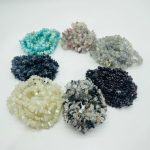A Legacy of Artistic Expression
Soapstone carving, an ancient art form dating back thousands of years, has captivated civilizations across the globe. From the intricate sculptures of the Incas to the delicate figurines of the Chinese, soapstone has served as an enduring canvas for human creativity. The soft, yet durable nature of this metamorphic rock makes it an ideal medium for intricate carvings, lending itself to a wide range of artistic expressions.

Properties of Soapstone and Its Significance
Soapstone, also known as steatite, is a metamorphic rock primarily composed of talc and magnesium. Its name derives from its slippery feel when touched, reminiscent of wet soap. This unique characteristic makes soapstone resistant to heat and chemicals, rendering it both easy to carve and exceptionally long-lasting.
The United States Geological Survey (USGS) estimates that global soapstone reserves stand at over 100 million tons, with significant deposits located in countries such as Finland, Brazil, India, and the United States. The widespread availability and versatility of soapstone have contributed to its wide use in various applications, including carving, construction, and heat retention devices.
Techniques of Soapstone Carving
Soapstone carving employs a range of techniques to achieve intricate designs. The most common methods include:
Chiseling: Using chisels of varying sizes and shapes to remove material from the soapstone, creating depth and contours.
Gouging: Utilizing gouges, curved tools with sharp edges, to carve out larger areas and smooth out surfaces.
Drilling: Employing drills to create holes and intricate details that would otherwise be difficult to achieve.
Filing: Using files to refine and polish the carved surfaces, removing any burrs or unevenness.
Tools and Materials for Soapstone Carving
Soapstone carving requires a modest set of tools and materials:
Soapstone: The foundation of any carving project. Select a block of soapstone that is free of cracks or inclusions and appropriate for the size and complexity of your design.
Carving Tools: Choose chisels, gouges, and files specifically designed for soapstone carving. These tools come in various sizes and shapes to suit different carving requirements.
Abrasives: Use sandpaper or abrasive pads to smooth and finish the carved surfaces, giving them a polished appearance.
Safety Gear: Wear safety glasses and a dust mask to protect yourself from dust and debris generated during the carving process.
Applications of Soapstone Carving
The versatility of soapstone has led to its use in a wide range of applications, including:
Sculpture: Soapstone is a popular medium for creating sculptures, both large and small, ranging from intricate figurines to monumental works of art.
Jewelry: Soapstone’s unique properties make it an excellent material for creating delicate pendants, earrings, and other jewelry pieces.
Tableware: Soapstone’s heat resistance and durability make it an ideal choice for carving plates, bowls, and other tableware that can withstand heat and repeated use.
Household Items: Soapstone can be carved into a variety of household items, such as coasters, candle holders, and decorative accents, adding a touch of rustic elegance to any space.
Benefits of Soapstone Carving
Soapstone carving offers numerous benefits, including:
Stress Relief: The meditative and repetitive nature of soapstone carving can provide a calming and stress-relieving effect.
Improved Cognitive Function: Carving requires focus, precision, and spatial reasoning, which can stimulate cognitive abilities.
Artistic Fulfillment: Soapstone carving allows individuals to express their creativity and produce tangible works of art that can be enjoyed for years to come.
Cultural Preservation: By practicing soapstone carving, individuals contribute to the preservation and传承 of cultural heritage and artistic traditions.
Common Mistakes to Avoid
To maximize the enjoyment and success of your soapstone carving endeavors, avoid these common mistakes:
1. Carving Too Fast: Take your time and approach the carving process patiently. Rushing can lead to mistakes and injuries.
2. Using Dull Tools: Keep your carving tools sharp to ensure precision and prevent excessive force.
3. Over-Carving: Resist the temptation to carve too deeply or remove too much material. Soapstone is a forgiving medium, so start with shallow cuts and gradually deepen them as needed.
4. Neglecting Safety: Always wear appropriate safety gear to protect yourself from dust and debris.
Why Soapstone Carving Matters
Soapstone carving is an art form that transcends time and cultures. It offers a unique blend of creativity, stress relief, cognitive stimulation, and cultural preservation. By embracing this ancient art, individuals can unlock their artistic potential, contribute to their communities, and connect with a timeless tradition.
Table 1: Global Soapstone Reserves by Country
| Country | Estimated Reserves (in million tons) |
|---|---|
| Finland | 20-30 |
| Brazil | 15-20 |
| India | 10-15 |
| United States | 5-10 |
| China | 5-10 |
Table 2: Hardness and Density of Soapstone Compared to Other Rocks
| Material | Hardness (Mohs Scale) | Density (g/cm3) |
|---|---|---|
| Soapstone | 1-2 | 2.6-2.8 |
| Marble | 3 | 2.7-2.9 |
| Sandstone | 2 | 2.1-2.3 |
| Limestone | 4 | 2.5-2.7 |
Table 3: Carving Tools for Soapstone by Purpose
| Tool Type | Purpose |
|---|---|
| Chisels | Removing material, creating depth |
| Gouges | Carving larger areas, smoothing surfaces |
| Files | Refining and polishing surfaces |
| Drills | Creating holes and intricate details |
Table 4: Applications of Soapstone by Industry
| Industry | Application |
|---|---|
| Sculpting | Figurines, monuments |
| Jewelry | Pendants, earrings |
| Tableware | Plates, bowls |
| Household Items | Coasters, candle holders |
| Construction | Fireplaces, countertops |




























